Bakery
Alginate improves the physical properties of bread dough. By simply mixing wheat flour with 0.1 to 0.2% alginate, the water retention of the dough is improved, by acting on the protein in the flour to strengthen the structure of the dough. After baking, the volume of the bread increases and creates a crush-resistant bread.
Applications and effects
※Alginic acid and all products derived from it are collectively referred to as Alginate. Please refer to the correct product name in each application.
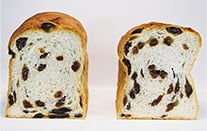
Increased water content
Increases the amount of water added to the bread dough without compromising the dough workability.
![]()
![]()
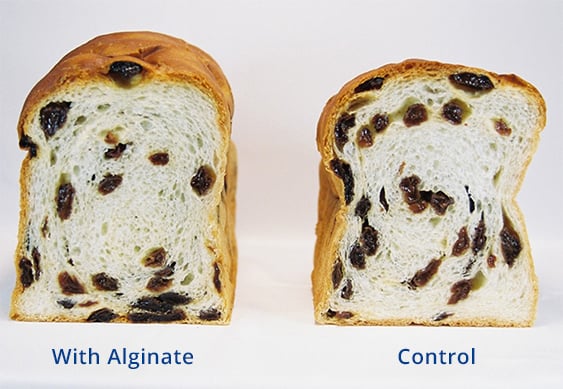
By adding 0.1 to 0.2% of alginate to flour, the amount of water added to the dough can be increased by 3 to 5%. If the amount of water added is increased without using alginate, the dough becomes sticky making it difficult to produce bread. However, by adding alginate, the dough does not become sticky and produces a dough with good stretch.
In addition, bread with a large amount of added water tends to collapse after baking but adding alginate increases elasticity, resulting in a well-shaped bread which is hard to collapse.
- 【Alginate to be used】
- Propylene Glycol Alginate
- 【Recommended dosage】
- 0.1~0.5% against flour
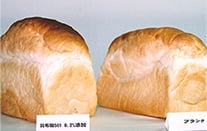
Volume increase
Uniform swelling, improving the overall volume of the bread.
![]()
![]()
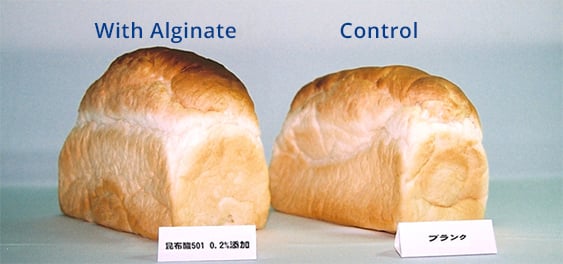
When the dough containing alginate and increased water is baked, the bread swells larger than usual. The bread is elastic and rises from the bottom to increase the overall bread volume.
- 【Alginate to be used】
- Propylene Glycol Alginate
- 【Recommended dosage】
- 0.1~0.5% against flour
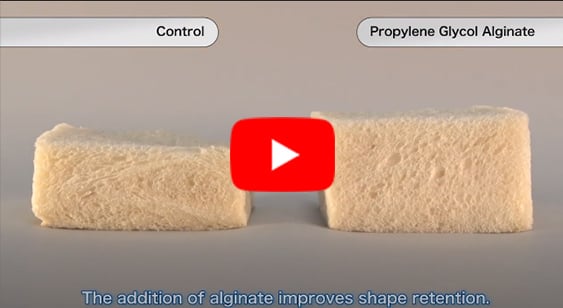
Improved elasticity and texture
Difficult to crush and no loss of texture during chilled transportation.
![]()
![]()
Bread containing alginate restores to its original shape after crushing, improving the storage shape.
Bread which is chilled and distributed as sandwiches, is processed to maintain softness even at refrigerated temperatures. However, soft bread tends to collapse and deform easily, and when eating, can give a sticky texture.
Alginate can assist even with soft doughs to improve bread elasticity, so any sandwich does not collapse and keeps a good shape. Also, it is not sticky, giving good texture and mouthfeel. It is indispensable for sandwiches stored as chilled products in convenience stores and supermarkets.
- 【Alginate to be used】
- Propylene Glycol Alginate
- 【Recommended dosage】
- 0.1~0.5% against flour
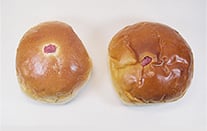
Improved appearance on open shelves
Prevent wrinkles, cracks, and maintain a fresh shape.
![]()
![]()
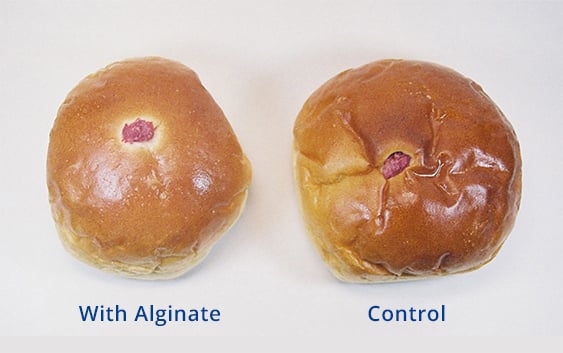
After baking, bread may become wrinkled or may lose shape over time. With Alginate, the shape of the baked bread is maintained over time helping to increase the product value. Bread displayed on open shelves will maintain its good shape.
- 【Alginate to be used】
- Propylene Glycol Alginate
- 【Recommended dosage】
- 0.1~0.5% against flour
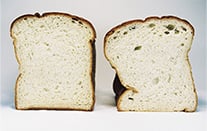
Caving prevention
Increases the bread elasticity, reducing bread collapse after baking.
![]()
![]()
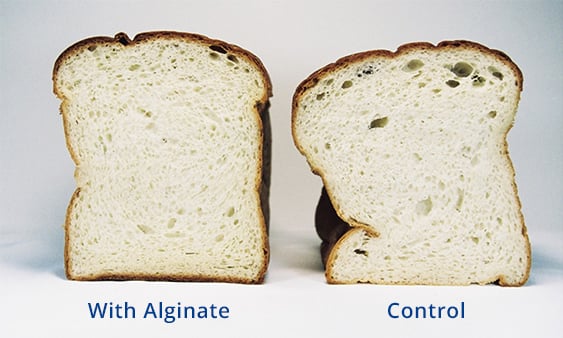
Bread that is prone to shrink and collapse after baking results in deep side dents (this phenomenon is called "caving"). The elasticity of the entire bread is increased by adding alginate and it becomes difficult to be shrunk and collapse after baking, so caving can be prevented.
- 【Alginate to be used】
- Propylene Glycol Alginate
- 【Recommended dosage】
- 0.1~0.5% against flour
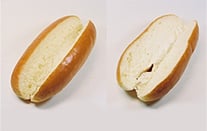
Improved workability
Hot dog or finger rolls are less likely to split, reducing crumbs
![]()
![]()
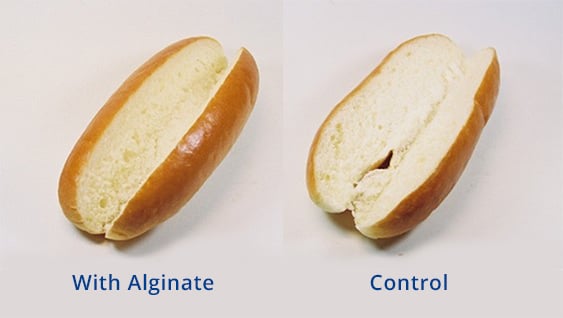
Hot dog/finger rolls can be difficult to break or split, adding alginate gives bread an enhanced elasticity, which improves workability when processing breads and improves yield. In addition, crumbs are greatly reduced when cutting with a slicer.
- 【Alginate to be used】
- Propylene Glycol Alginate
- 【Recommended dosage】
- 0.1~0.5% against flour
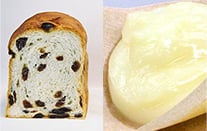
Prevention of syneresis
Retains moisture that seeps from the filling and prevents escape to the outside.
![]()
![]()
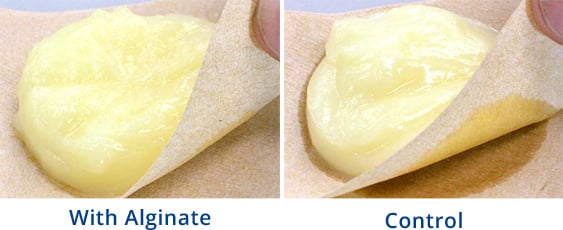
Moisture which seeps from items wrapped in bread (fillings), such as jam, fruit, curry, etc., can make the bread overly moist or cause holes. Alginate gels the moisture which seeps from the filling ingredients and prevents the moisture escaping into the dough.
- 【Alginate to be used】
- KIMICA ALGIN M406
- Apple pie
- Bakery Filling Cream
- 【Recommended dosage】
- 0.1~0.5% of total amount
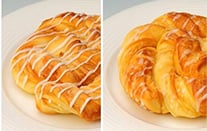
Icing improvements
Reduces the solidification time and prevents sickness due to moisture.
![]()
![]()
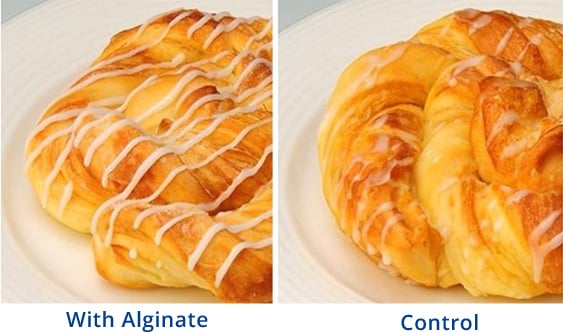
When alginate is blended into an icing (a white cream-like sugar coating), the time to solidify is shortened and stickiness due to moisture absorption is prevented.
- 【Alginate to be used】
- KIMICA ALGIN M406
- Fondant
- 【Recommended dosage】
- 0.1~0.5% of total amount
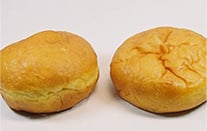
Heat resistance
Maintains a soft feel and elasticity even when heated in a microwave oven.
![]()
![]()
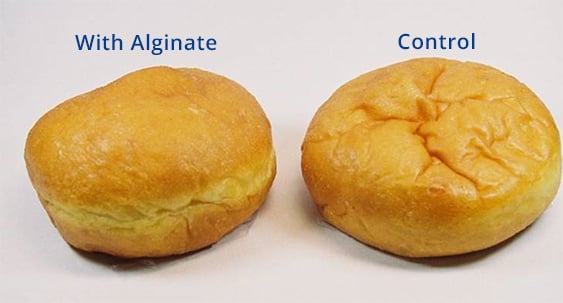
Heating bread or a donut which have been refrigerated or frozen may cause wrinkles or the surface to become soggy. Alginate containing bread maintains a soft and resilient texture even after heating in a microwave oven. This allows bread products such as hot dogs and hamburgers which do not soften after heated in a microwave oven to be commercialized.
- 【Alginate to be used】
- Propylene Glycol Alginate
- Propylene Glycol Alginate
- 【Recommended dosage】
- 0.1~0.5% against flour
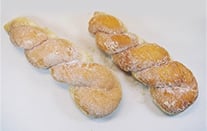
Oil absorption reduction
Reduced oil adsorption lowers calories and improves texture.
![]()
![]()
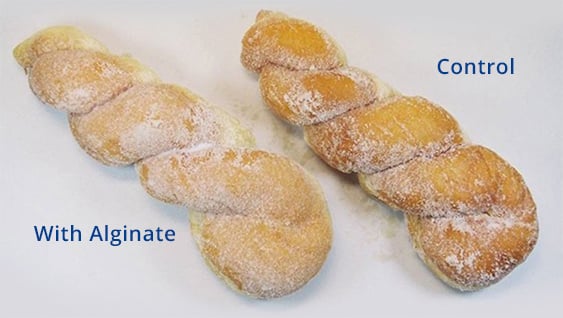
When alginate is blended into a donut dough, the amount of oil remaining in the donut after frying is reduced. As a result, it prevents the deterioration of texture and stickiness caused by oil, reduces the amount of oil consumed and also reduces the amount of oil used for cooking.
- 【Alginate to be used】
- Propylene Glycol Alginate
- 【Recommended dosage】
- 0.2~1% against flour
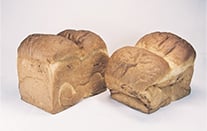
Rice flour bread and low sugar bread
Swells well and is fluffy, without using wheat flour.
![]()
![]()
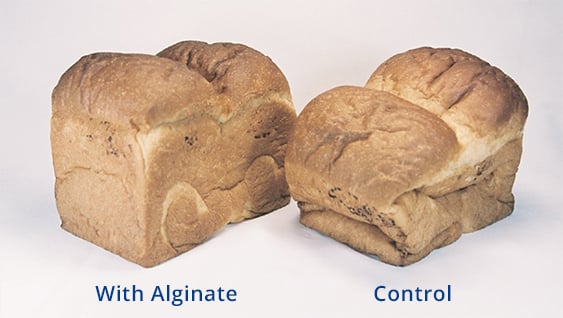
Rice flour bread
Rice flour has a higher water-absorbance than wheat flour because it contains no gluten making it difficult to swell even when processed into bread. Alginate can make rice flour bread swell into a good shape, with a good mouthfeel, enhancing product value.
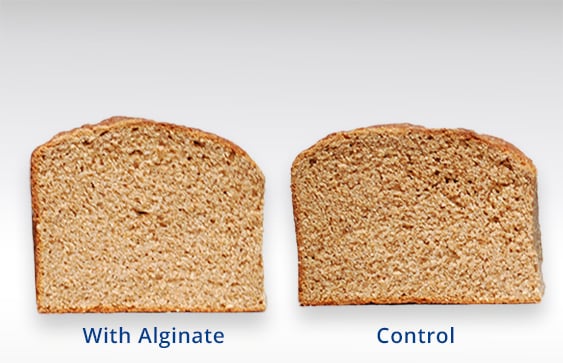
Low sugar bread
In order to reduce sugar, soybeans and wheat bran are usually used in bread but it is difficult to swell and produce a regular shape. Alginate can be used to swell low sugar bread producing a good shape.
- 【Alginate to be used】
- Propylene Glycol Alginate
- 【Recommended dosage】
- 0.5~1% against flour
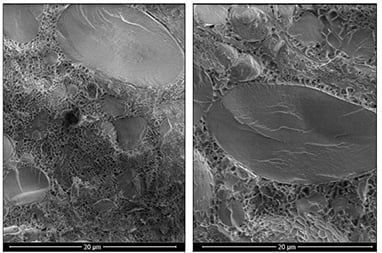
Column
Alginate Quality Improvement Mechanism
![]()
![]()
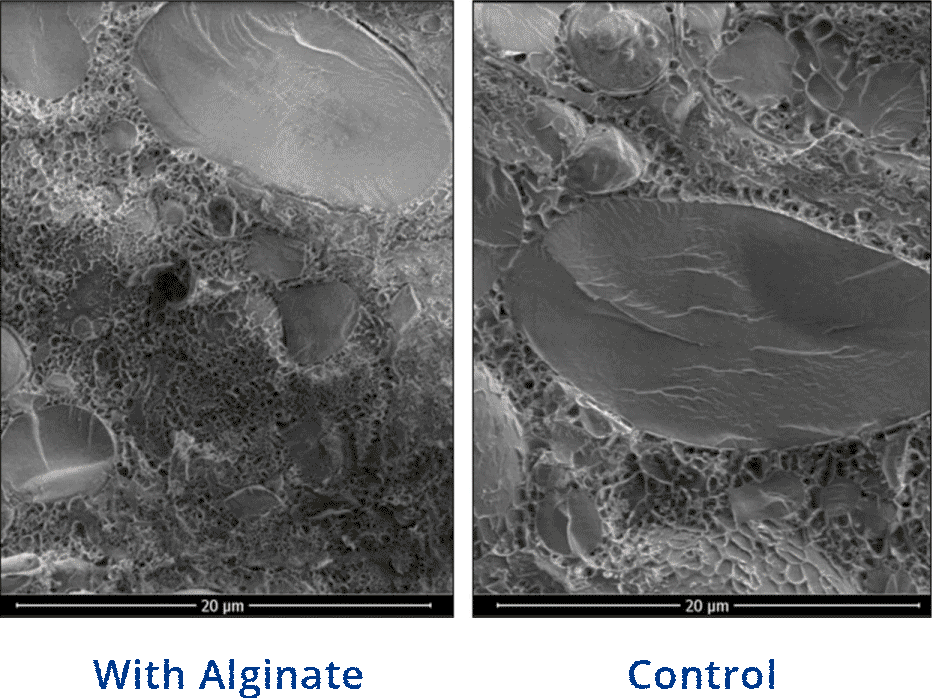
※The gluten network is colored in yellow.
Alginate acts on the protein in wheat flour to make the gluten network structure, formed in the dough, uniform and dense. This dense gluten network supports firmly the structure of bread and noodles, thus enhancing elasticity and good mouthfeel.
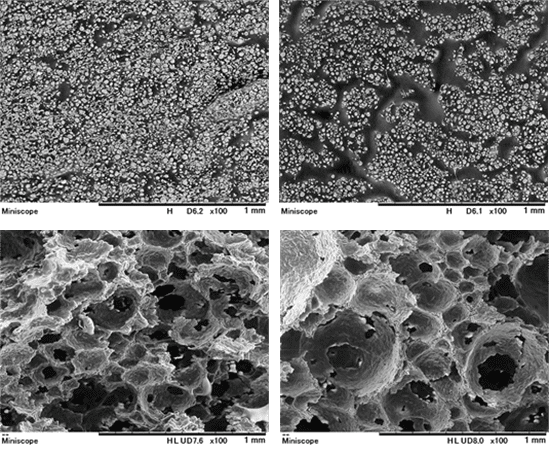
Column
Alginate Oil Absorption Reduction Mechanism
![]()
![]()
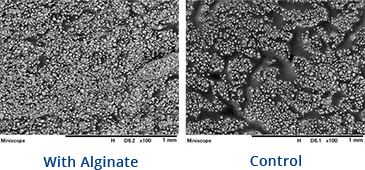
Donut surface
Donuts which do not have alginate added have a noticeable oil content on the donut surface (a dark gray zone in the photo). Donuts with added alginate do not show this effect. This results in the elimination of stickiness and gives a fresher texture.
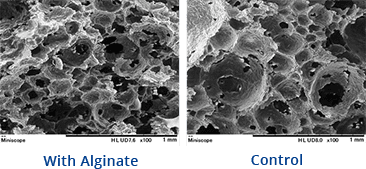
Inner donut phase
The inner phase of the donut without alginate is rough, has uneven bubbles and the dough walls are thick. By adding alginate, the bubbles in the inner layer of the donut become finer and uniform, the dough wall is also thinner. This leads to a reduction in the oil content absorbed into the dough.